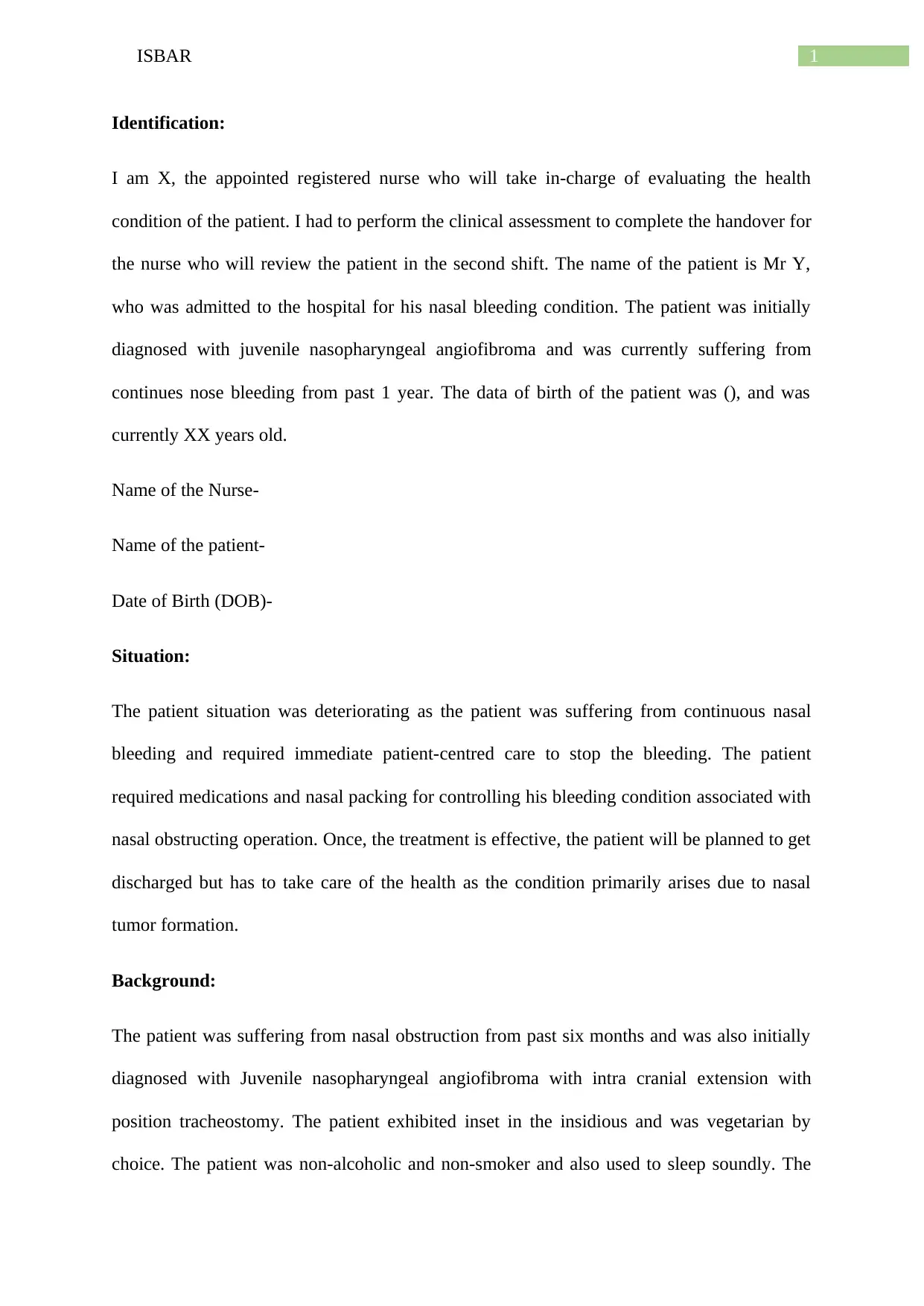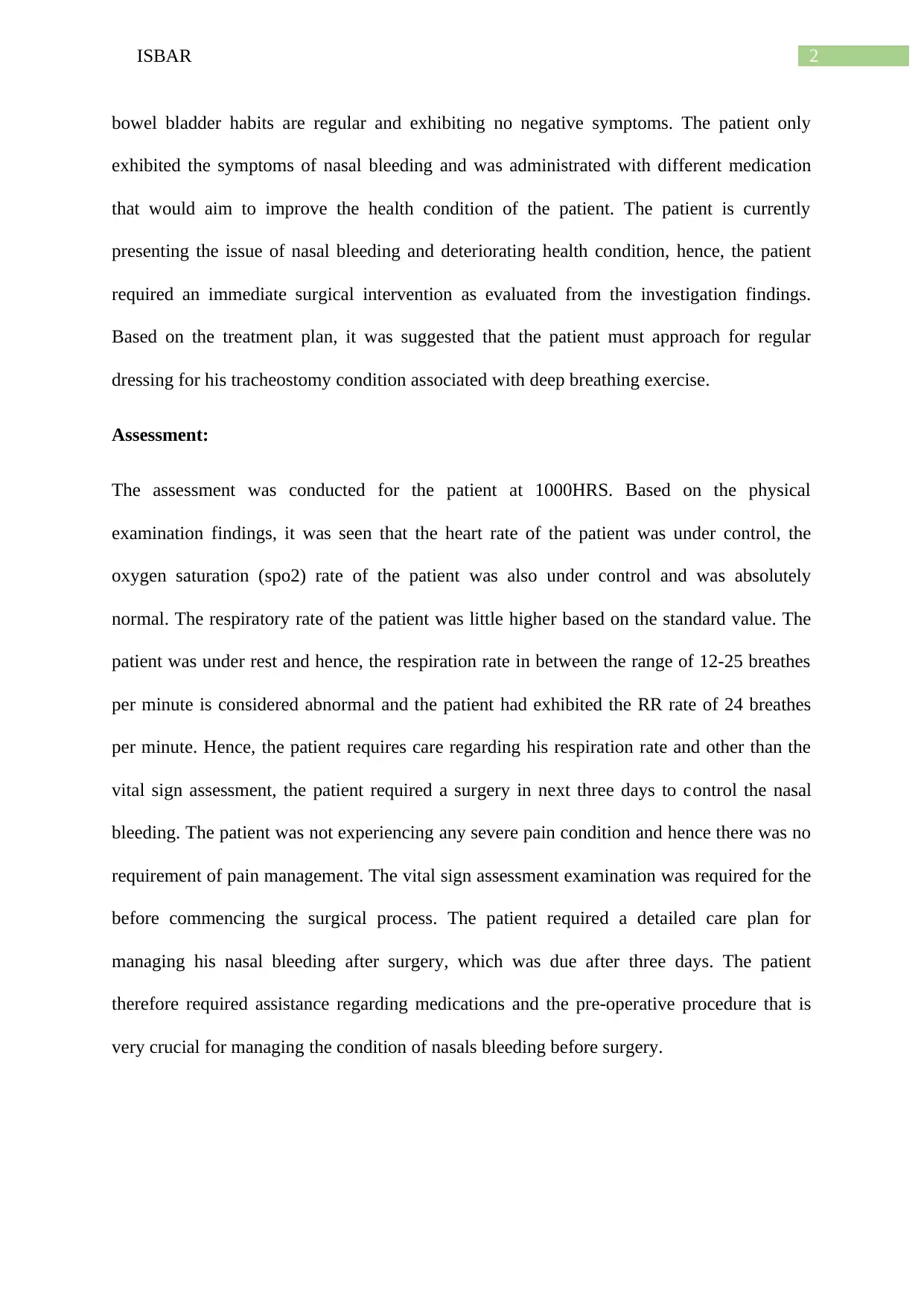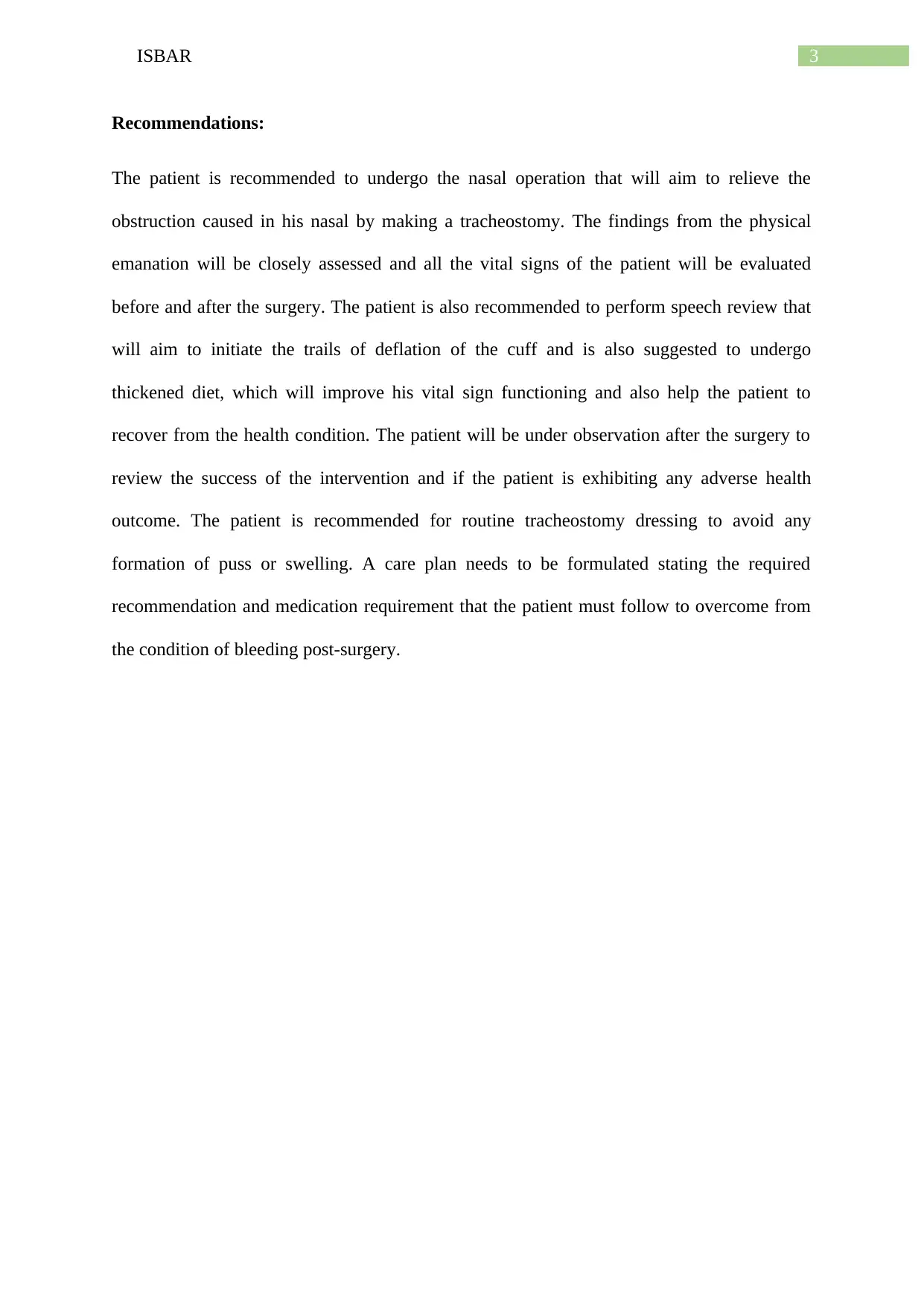University Healthcare Report: ISBAR Analysis of Patient Nasal Bleeding
VerifiedAdded on 2022/11/09
|4
|763
|273
Report
AI Summary
This ISBAR report details the care of a patient, Mr. Y, admitted for nasal bleeding. The report, authored by a registered nurse, outlines the patient's situation, background, assessment, and recommendations. Mr. Y, diagnosed with juvenile nasopharyngeal angiofibroma, has been experiencing continuous nasal bleeding. The report covers the patient's history, including nasal obstruction and previous diagnoses. The assessment conducted at 1000HRS revealed that while the patient's heart rate and oxygen saturation were within normal limits, his respiratory rate was slightly elevated. The report recommends a nasal operation and a detailed care plan for post-surgery management, emphasizing the importance of monitoring vital signs and providing appropriate medications. The patient is also recommended to undergo speech review and a thickened diet to aid recovery. The report highlights the need for routine tracheostomy dressing and formulation of a post-surgery care plan.
1 out of 4











![[object Object]](/_next/static/media/star-bottom.7253800d.svg)